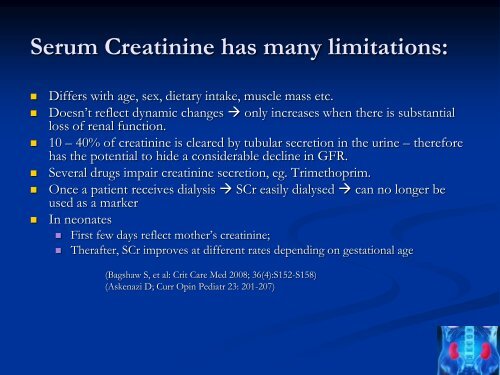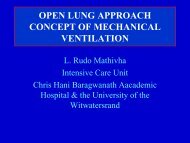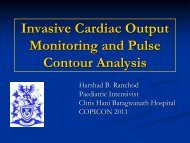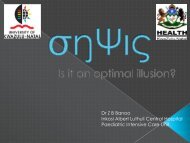Acute Kidney Injury in In Paediatrics
Acute Kidney Injury in In Paediatrics
Acute Kidney Injury in In Paediatrics
You also want an ePaper? Increase the reach of your titles
YUMPU automatically turns print PDFs into web optimized ePapers that Google loves.
Serum Creat<strong>in</strong><strong>in</strong>e has many limitations:<br />
• Differs with age, sex, dietary <strong>in</strong>take, muscle mass etc.<br />
• Doesn’t reflect dynamic changes only <strong>in</strong>creases when there is substantial<br />
loss of renal function.<br />
• 10 – 40% of creat<strong>in</strong><strong>in</strong>e is cleared by tubular secretion <strong>in</strong> the ur<strong>in</strong>e – therefore<br />
has the potential to hide a considerable decl<strong>in</strong>e <strong>in</strong> GFR.<br />
• Several drugs impair creat<strong>in</strong><strong>in</strong>e secretion, eg. Trimethoprim.<br />
• Once a patient receives dialysis SCr easily dialysed can no longer be<br />
used as a marker<br />
• <strong>In</strong> neonates<br />
• First few days reflect mother’s creat<strong>in</strong><strong>in</strong>e;<br />
• Therafter, SCr improves at different rates depend<strong>in</strong>g on gestational age<br />
(Bagshaw S, et al: Crit Care Med 2008; 36(4):S152-S158)<br />
(Askenazi D; Curr Op<strong>in</strong> Pediatr 23: 201-207)

















